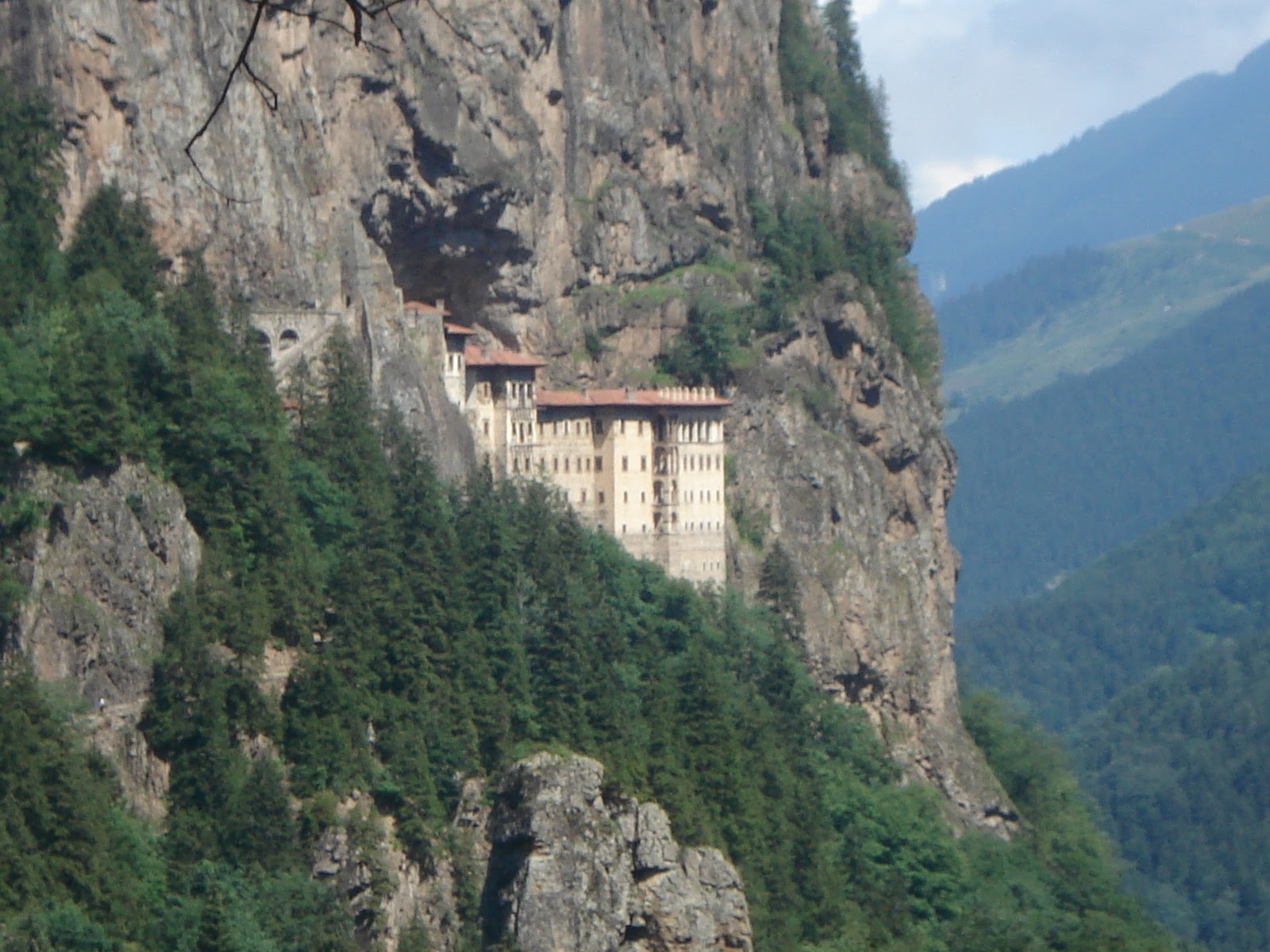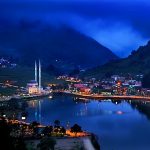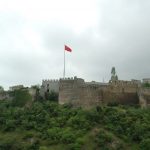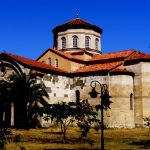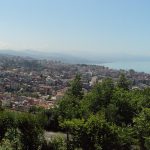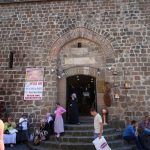It is built on the steep rocks in Altındere Village which is located at the Maçka district of Trabzon. It is called “Mother Mary” among the people.
Meryem Ana, located about 300 meters high from the Altındere village, was constructed in accordance with tradition of clay rocks, forests, caves and traditional monastery constructions. The monastery founded by Maryan Anaya was taken from the word melas, which is called black in the name of Sümela. When you look at the dark mountains where the monastery is located, you can understand why you took the name of Silver, which means black. Fallmerayer, one of the famous historians, has linked the monastery to the construction of dark mountains during the monastic visit.
Foundation of Foundation
It corresponds to a year in which the 12th century art world is gradually developing and integrating legend. It is known that the icons of Mother Mary under the name of the black Madonna, which had been shaped over the legends in those years, appeared in the Christian mosque. Some beliefs such as the spreading of the Virgin Mary icons, which have become the source of the Christian world’s livelihood, spread the discovery of miracles among the people and thus the disasters in the regions where they are missing are spread. One of the icons of Mother Mary was made by Lukas of the apostles of Jesus, held in Athens, but in the time of Theodosius the painting was brought by the angels to the pit on the mountains of Trabzon and placed on the stones.
The arrival of the Virgin Mary icons to Trabzon, which is attributed to all by the public, brings to the mountains where the two monks, Barnabas and Sophronios, brought the Mother Mary icon to build the Anakaya church. This church was enlarged by the Emperor Justinian in the 6th century and became a monastery.
Although the legend of the establishment of the monastery is described in this way, we are aware of the existence of the myth that is expressed in a different form. According to this myth, the situation is as follows: After a great hose, Mary rescues the life of 3rd Alesios and leaves it at the site of today’s Sümela Monastery. Later, by issuing the 3.Alesios edict, he ordered that this place be a monastery connected to rich foundations. Today this edict or order is located at the gate of the monastery. He also wrote that Alexander III was the founder of the Monastery.
Scientifically the Sümela Monastery
According to historical researches, the construction of Sumela Monastery goes up to the 13th century. From the Kommenos Persian founded in Trabzon in 1204 called as Trabzon Commons, the importance of the monastery increased during the time of 3.Alexios (1349-1390) and it started to gain income with the fermans. The Ottoman Empire’s domination of the eastern Black Sea borders ensured that the monastery continued with the recognition of the fanciful rights. Some monasteries were presented by Fatih Sultan Mehmet Han and Yavuz Sultan Selim Han.
Sümela Monastery Departments
Its main parts are; Student rooms, master rock church, several chapels, guest house, library and sacred writings. The area covered by these sections is quite extensive. The belt that meets the need for water right before the start of the monastery is remarkable. Having multiple observations, the arch has been restored by the Municipality of Trabzon and has been given time.
You leave a long staircase and reach the central point of the monastery. There are guard rooms that draw attention to the entrance, and the inside of the monastery is entered by the stairs located there. On the left side you enter, there are rooms with churches which are important for the monastery. Immediately on the right is a library.
The rock church, which is the main unit of the monastery, and its integrated chapel are equipped with frescoes both inside and outside. These frescoes are believed to belong to the 3rd Alexios period. The frescoes in the chapels are thought to belong to the 18th century. It is understood that many frescoes have disappeared in the monastery. The frescoes beneath the walls suggest that the monastery is always equipped with frescoes. The fresco pictured on the wall of a small chapel depicts the dragon and two saints, Georgios and Demetrios.


